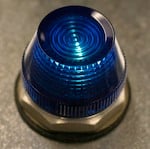pentium wrote:
Since hubs, transceivers and cards are getting cheaper (and since almost all my computers are in the same part of the house) I thought it might be nice to finally upgrade from my tangle of 10Mbit BNC ThinNet, 10Mbit CAT 5e, 100Mbit CAT 5e, AppleTalk and Token Ring to just Token ring (so I can network my old AIX 1.3 box) and Fiber.
The cables I am getting should cover most of my computer room however I'm not going to get all the systems. So far, it will look like I will need seven PCI fiber cards and seven AUI fiber transceivers. If I get a fiber card for the Onyx and the Indy we can take out two transceivers. If I can find two Sbus Fiber cards for the SUN systems, I can take out two more transceivers.
The only systems that I don't think I can network are my macs (both PCI and NuBus) and my Intel (white box) NeXTStep 3.3 system.
The only items I currently have that are related to fiber are two FORE ATM cards for the Crimson and Onyx and a card installed in my Indigo. What do you think?
I apologize for the length of this post. You seem to really want to do something with that fiber, that's great but don't waste to much money to push light through the orange stuff.
Well by now you've figured out the different protocols that you might pass through your fiber cables. I've messed with fiber for Ethernet a little and quite honestly it's boring. Once you understand it's the same idea as any other Ethernet it becomes, well, the same as any other Ethernet. Figure out Tx goes to Rx and Rx to Tx and that if it doesn't work you need to swap one side and it's just like plugging RJ45 cables in. Well it's twice as much work.
But not to discount the experience...I've worked with many people that just didn't know/realize Ethernet over fiber isn't that much different than Ethernet over cooper and were either confused, scared or impressed by it. Sometimes they think it's "fiber" and somehow different than Ethernet. I've even seen people think, oh well, "it's fiber so it must be fast"...never mind it was a 10 mb Ethernet (mixed 10Base-T and 10Base-FL network with 200+ nodes on a single collision domain (all hubs).
While switches might exist, I'm not sure if I've seen anything other than hubs in the 10mb ethernet area. 10mb fiber Ethernet isn't much better than the 10Base-2 topology, not any faster, just a little less fragile. Make the jump to 10Base-T and you'll have less to worry about.
The 3com corebuilder 3500 came up, it's a solid piece of equipment, a little noisy but not any worse than that ML370 I saw in your picture. The corebuilder is also a layer3 switch so you could make your network nice and complicated if you like. I have one if you want it, but it's full of 100Base-T cards, no fiber. 100Base-FX cards come up on ebay often, but it sounds like you want to connect old stuff so you're stuck at 10mb and that doesn't help you.
Unlike a $40 gigabit ethernet switch, fiber gear is one speed. It won't autoselect to 10/100/1000mb like a 10/100/1000Base-T switch, it's the speed it is. You get to choose full duplex if it's a switch, you get to swap the strands for cross-over and it's 10mb or 100mb or 1000mb when you buy it.
Getting the ATM gear working with an inexpensive switch from ebay, while risking head explosion, might be worthwhile for the speed and experience. I have no experience with it. You'll want a switch that can covert to Ethernet to get to the rest of your network.
Fiber has a place...just not on machines 20 feet apart. Use it between wiring closets and buildings. Use it for high speed connections (10gigabit Ethernet!). Use it for protocols that don't have a copper media layer (Fibre Channel storage...the faster ones). Set it up in your lab for experience, but don't bother making everything fiber.
10Base-FL, 100Base-FX and 1000Base-SX are all similar. 10Base-FL is often ST connectors, 100Base-FX is often SC, and 1000Base-SX is usually MT-RJ (with some older stuff using SC). But at the end of the day you plug two fiber strands in on each end and check for link lights (on both ends).
I think you could get twisted pair (copper rj45) AUI connectors and enough patch cables for less than the fiber AUI connectors and it would be better in the long run...get the 10Base-2 network out. 25 foot and less patch cables can be found for cheap if you look around and probably can get them for free from friends that stole them from work.
While you're dreaming of fiber, consider media converters and consider just using fiber on a couple devices for the novelty, experience or whatever. Check out IMC Networks for example, they make/made some modular chassis that accepted different converters for 10 or 100mb ethernet and different fiber connectors. You could use one with a couple modules in it to front end a 10/100 switch to run your Mac with the AAUI converter you already grabbed and something else.






















 <-------- A very happy forum member.
<-------- A very happy forum member.







 (<-EMXI/IO6G)
(<-EMXI/IO6G)










 Maybe once my KVM project is finished ...
Maybe once my KVM project is finished ...




 J5600, 2 x SUN, 2 x Mac, 3 x Alpha, 2 x RS/6000
J5600, 2 x SUN, 2 x Mac, 3 x Alpha, 2 x RS/6000